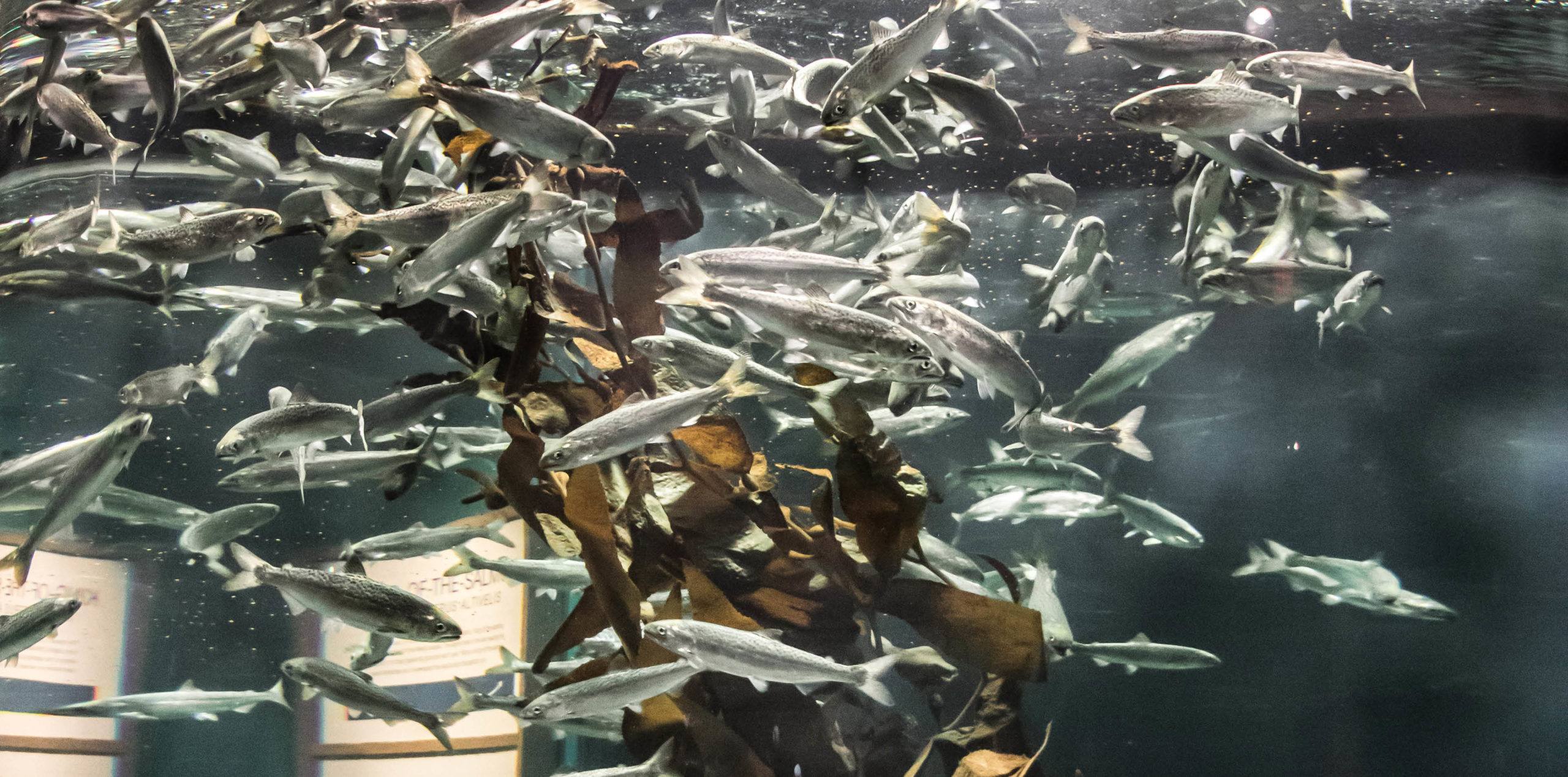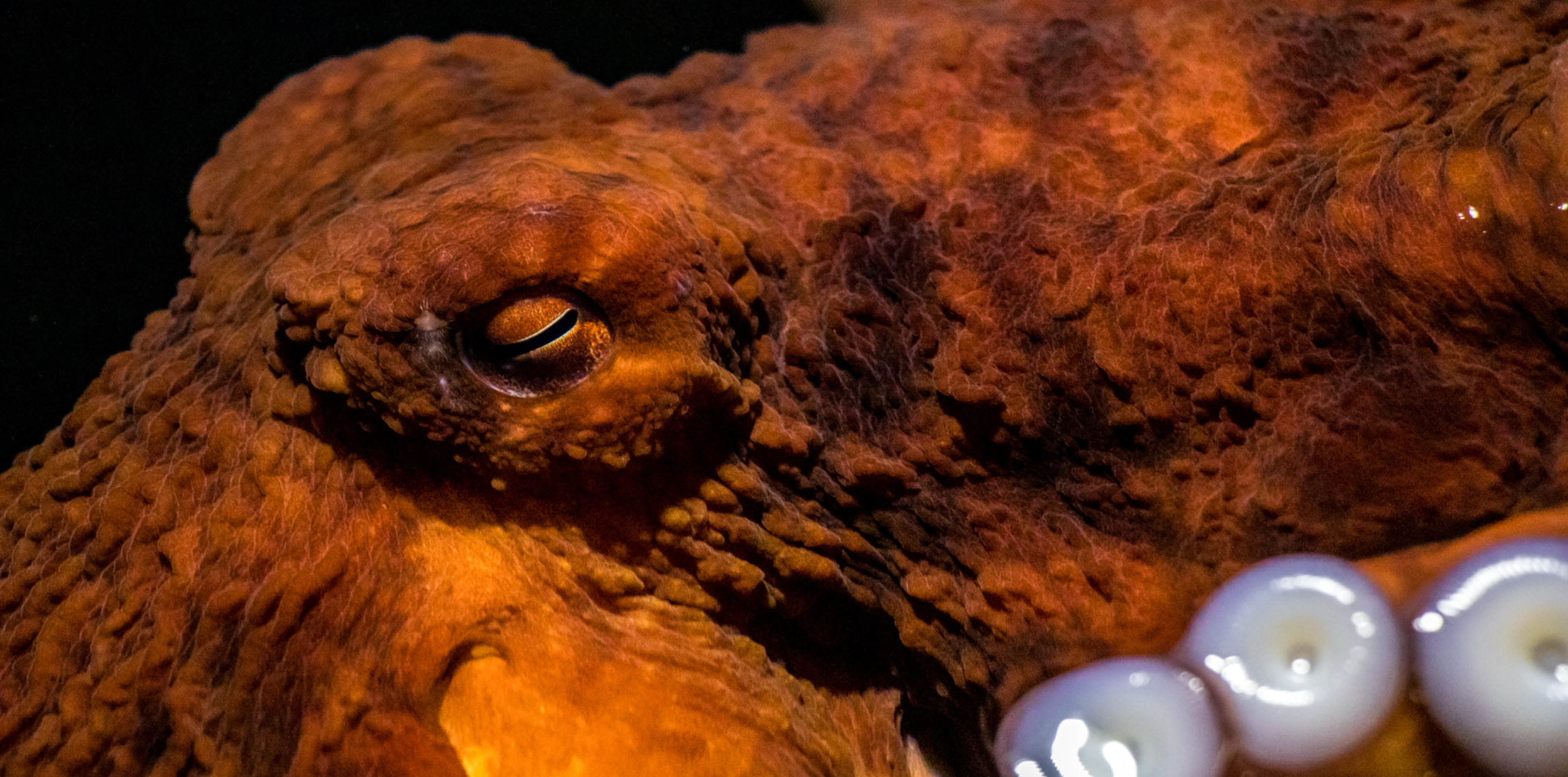by Deborah Rogers | photos by Amanda Cribdon Photography –
Our January rains have made it a watery world out there. Some days, with rain hammering on the skylights above and running down the window in front of me, I’ve felt like I was working underwater. Of course there’s a group of people in our community who have that experience every single work day! At the Shaw Centre for the Salish Sea the lights are dim and the walls embedded with glass tanks. Every direction you look there’s water, and there’s a slight tang of watery damp in the air too. Of course this water is filled with fascinating life, but I wonder what it must feel like to work in this otherworldly environment.
I was welcomed behind the scenes by Kit Thornton, Chief Aquarist, and her colleague Amanda, the Head Aquarist. As an education centre as well as a visitor attraction you will always learn something when you pay a visit to Sidney’s Aquarium, but I wanted to take a look at the jobs that the public don’t see, which required a visit before the Centre was open to the public. There’s feeding to do every day, along with cleaning and checking all the resident species. Today Intern Vicki is working on the “tower” where artemia are being grown; it’s a somewhat stinky job! These teeny, tiny cysts are harvested from Salt Lake in Utah. Looking like a grain of sand, they’ve actually been lying dormant for millions of years. When put in the correct conditions the cysts will hatch and grow, creating a protein- and calcium-rich food source packed with fatty acids, just right for the small fish, crabs and other creatures in the aquarium’s tanks.
Cleverly camouflaged in the colourful wall of the gallery are a number of doors; these take you literally behind-the-scenes, into the space where the food prep happens. In the freezer here are bags of tiny mysis shrimp and large blocks of krill, all hard frozen to -18°C to kill off any parasites. Also in this cramped workspace is a quarantine tank that today houses some perch (just taking a rest) and a legless crab. “The ocean is a brutal place,” Kit tells me, and it’s true – even in these enclosed places creatures will attack each other. Every day the Aquarists go through the aquarium to check all the inhabitants for any illness or injuries, and they’re removed to this safe spot and looked after.
There’s a lot to do: the Centre employs three full-time Aquarists and one part-timer plus the other management staff. They also depend on a number of volunteers who help with the feeding, cleaning and visitor experience. Equally important is regular monitoring of the salinity of the tanks and the temperature of the water.
I met Hugh, the “Life Support” Manager. He’s in charge of all the mechanical systems and ready to leap into action whenever something breaks down. More importantly, he has backup plans on top of backup plans to ensure that there are always safeguards for the aquatic life should equipment fail.
Kit and Amanda are clearly enamoured with fish and the whole underwater ecosystem. They light up as they tell me about their salmon breeding program and Kit tells me that releasing the salmon into the Haro Strait every two years is a real highlight. There’s a feeding frenzy in the tank as Amanda drops mysis and pellets in for the chinook salmon. They start as just three-inch fingerlings and will be cared for at the Centre until they are big enough to be released, which is around 14 inches. Hopefully many will manage to spawn and produce future generations, but they’ll also be food for our resident killer whales!
I played my part feeding some of the smelly artemia mixture to stickleback and perch. Then I got a little surprise. One of the stars of many visits to the Centre is the giant Pacific octopus who has a tank to herself (or himself; they only stay at the centre for six months at a time) and amuses and amazes with a fascinating dexterity. The access to the octopus tank is hidden behind closed doors but I got the chance to peer into the top and offer some shrimp to the waving arms that quickly appeared! It was extraordinary to be so close to such a strange, otherworldly creature.
We’re surrounded by ocean, but it’s rare to see what lives deep within it. Thanks to the Shaw Centre for the Salish Sea we can not just look at the incredible creatures that live below the surface, but we can learn about them, and learn how to protect their environment so more of them survive and thrive.





